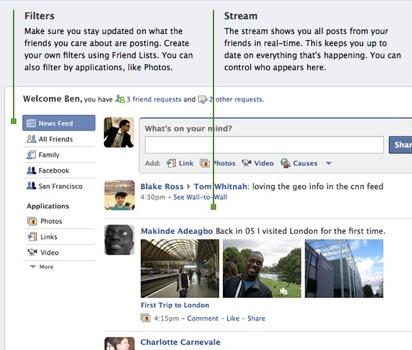This morning I was part of a panel discussion, talking to the Greater Milwaukee Committee’s Insider Breakfast, held at The University Club. The topic was social media. One of the questions from the audience was (to paraphrase), “I know of MySpace, Facebook, LinkedIn, Twitter, etc., but the only one I am a member of is LinkedIn — and I barely know how to use that. How do I prioritize as I get my feet wet in them?” Panelists had varying opinions, but I opted for a one-word answer: Facebook.
Start with Facebook, I advised.
Others, notably GMC president Julia Taylor (whose Twitter presence is @JHTaylor) and Cd Vann (@ThatWoman_SOHO), “participating visionary” of SOHO|biztube.com, disagreed. They leaned more toward Twitter as a place to start. As much as I enjoy Twitter, and find it invaluable in my consulting business, I rarely suggest a client start there as a way to understand the experience. Here are my reasons:
4 Reasons Why Facebook Is A Better Set of Training Wheels
- Twitter is too scary — Three weeks ago NY Times tech columnist David Pogue finally dipped his own toe into the waters of Twitter. Pogue began the column by saying, “I’m supposed to be on top of what’s new in tech, but there’s just too much, too fast; it’s like drinking from a fire hose. I can only imagine how hopeless a task it must be for everyone else.” This was his apology for being a “geek” and not being willing to face the ugly, 140-character beast that is Twitter. I feel for him. But more importantly, I feel for the clients who have to learn the arcane nomenclature of “re-tweets,” hash-tags and Twitter agents. When the panel discussion was over, I confided to Mary McCormick of the Rotary Club of Milwaukee that mere mention of Twitter causes most of my clients to go into spasms. I wouldn’t knowlingly wish that on anyone!
- Twitter is too amorphous — The same quality that makes Twitter so popular also makes it a little too much like a multi-faceted, super-charged desktop application (think Excel) that is daunting specifically because it is so versatile. I find myself using Twitter for a lot of things, and this versatility can lead to early abandonment and disappointment (read the book The Paradox of Choice: Why More Is Less for how this veritable banquet we face can be psychologically overwhelming).
- Facebook lowers the chance of a “crappy first experience” — Robert Scoble wrote that there is a barrier we’re facing today. It’s a “new digital divide.” The divide is between the folks who can swim easily in the social network pool and the “normal” people who refuse to or are afraid to dive in. Scoble writes that when these normal people get into a social network, “they enter a pretty lame environment since there are no friends … The first experience is a real crappy experience, since there’s no input. And it’s all about input from other users.” Facebook is more helpful than Twitter, and it’s easier to find a group of folks you can immediately “friend.” They can help you, and reduce the crap risk significantly.
- Facebook is becoming more like Twitter by the week — Just this week Facebook announced new changes to their interface. They make this social networking site, which already has a version of “tweets” in their mini-feed feature, even more like its competitor for user attention and participation.
I think all of us on the panel would agree that if you are a business leader, you need to start personally leaping the chasm — the digital divide — to get a feel for the new communication medium. You need to give social media a try. If you choose Facebook, I’m here. If it’s Twitter, I’ll see you there too, at @TheLarch!





